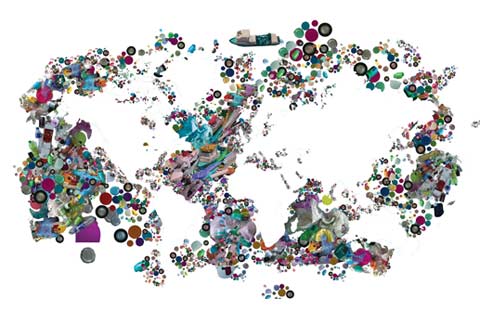Appreciate the yuan depreciation
Updated: 2014-04-28 06:35
By Xu Qiyuan (China Daily)
|
|||||||||||
|
 |
|
Zhang Chengliang / China Daily |
Devaluation of Chinese currency is a short-term phenomenon and poses no long-term risks
Since the beginning of this year, the renminbi has been depreciating against the US dollar. That marked a departure from the earlier trend of the Chinese currency appreciating against the US greenback since the exchange rate reform in 2005.
On Jan 15, the People's Bank of China's midpoint rate was 6.04 yuan for one US dollar. But by March 14, the same had fallen to 6.14 yuan. The bank announced that, effective March 17, the exchange rate would be allowed to rise or fall 2 percent from a daily midpoint rate set each morning by the central bank.
 |
 |
On March 21 the rate plummeted to 6.22 yuan. Compared with the exchange rate in mid-January, the yuan has depreciated more than 3 percent since then. However, the recent devaluation of the yuan is a rare phenomenon and there are several reasons for it.
Due to the US Federal Reserve's quantitative easing policy, short-term capital has been flowing out of emerging economies since the second half of last year, and currencies of emerging economies have been facing devaluation pressures.
Changes in the international environment have also weakened the expectations for yuan appreciation. Since January, the appreciation trend has slowed, or even moved onto a plateau. It is obvious that these changes have played a major role in the current round of devaluation.
Recent macroeconomic indicators have also triggered fears about the Chinese economy in the mid-term. In February, the growth rate of China's exports was minus 18.1 percent year-on-year. Even taking into account the effect of the Spring Festival, the numbers are still in the red. This is a major deviation from the earlier optimistic predictions.
In addition, during January and February, year-on-year growth in fixed asset investment was 17.9 percent, down 3.3 percentage points for the same period last year. More importantly, the added value of industrial enterprises' year-on-year growth in February fell to 8.8 percent, the lowest growth since April 2009.
At the same time, risks of a partial financial crisis are gradually emerging in China. Following the late payment crisis of China Credit Trust, the first corporate bond default of Chaori Solar, and the debt repayment crisis of a real estate company in Ningbo, downside macroeconomic indicators have promoted rising financial market risk factors.
Related Stories
US urged to 'understand' yuan issue 2014-04-17 08:46
PBOC boss sheds light on yuan exchange rate 2014-04-12 07:20
RMB to be global reserve currency by 2030: Economist 2014-04-09 23:51
US warns China over currency depreciation 2014-04-08 14:57
Reducing risks in yuan trading 2014-04-02 07:55
Appetite for yuan weakens as appreciation ends 2014-03-28 08:45
Today's Top News
Philippine pact gives US access to air, sea bases
Hunt resumes for bodies inside ferry
Ukrainian mayor wounded by gunfire
Alibaba IPO: Could be the biggest ever
Russia assures US it won't invade Ukraine
Japanese state minister visits Yasukuni shrine
Policeman's fake IDs spur investigations
Driver kills seven in E. China
Hot Topics
Lunar probe , China growth forecasts, Emission rules get tougher, China seen through 'colored lens', International board,
Editor's Picks

|

|

|

|

|

|





